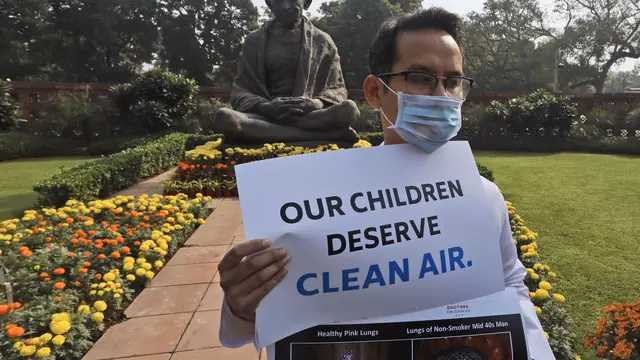
More than half of the world's 50 most polluted cities are in India and Pakistan, with climate change-triggered sandstorms and wildfires along with the rapid pace of urbanization worsening the air quality, according to report.
While India's national capital region (NCR) of Ghaziabad was the most polluted city, the capital, New Delhi, ranked fifth. The Chinese city of Hotan emerged as the second most polluted on the list. Pakistan's Gujranwala and Faisalabad ranked third and fourth, respectively.
One of the most dangerous pollutants – extremely fine particles (PM2.5) – exceeded the World Health Organization (WHO) annual safe limit by 500 percent in most of the Indian cities.
But compared to last year, the pollution level dropped by 20 percent, mostly due to the economic slowdown, said the
report
prepared by IQAir, a Swiss air filtration company.
"While the new coronavirus is dominating international headlines, a silent killer is contributing to nearly seven million more deaths a year: Air pollution," said Frank Hammes, CEO of IQAir.
Agricultural waste burning contributed majorly to worsening air quality in both countries. Wildfires played a similar role.
Crop stubble burning and wildfires have also affected air quality in Singapore, Australia, Indonesia, Brazil, Kuala Lumpur, Bangkok, Chiang Mai, and Los Angeles.
But the most significant improvement in air quality was witnessed in the Chinese capital Beijing, which has reduced PM2.5 concentration in the air by nearly half in the last decade.
**Desertification and the rise of sandstorms **
Despite the success in ensuring good air quality in the capital, nearly 98 percent of cities in the country failed to meet WHO standards. Almost half of all the cities in China couldn't meet government recommended national targets.
Witha quarter of its land under deserts and degraded land with little vegetation spanning to over 800-1,000 million hectares, this has led to frequent sandstorms in the region. Such storms have worsened the air quality in west China, according to the report.
"Once vegetation is gone, the local environment is much more prone to sand or dust storms. Those storms contribute to elevated levels of PM10 and PM2.5, which are harmful to health," Yann Boquillod, director of air quality monitoring at IQAir AirVisual, told CGTN.
Countries agreed to work towards meeting the land degradation target set by the United Nations Convention to Combat Desertification (UNCCD), which might reduce the impact of desertification in the coming years.
"Global warming is increasing wildfires and desertification in many places in the world," said Boquillod.
Despite many countries installing air monitoring systems to access real-time data of pollution levels, a large population in Africa and the Middle East lack information about air quality and sources of pollution.
Both regions are also facing one of the worst impacts of desertification in recent years.
"Africa, a continent of 1.3 billion people, currently has less than 100 monitoring stations that make PM2.5 data available to the public in real-time," said Hammes.
"More real-time air quality data leads citizens and governments to make better decisions that will improve the lives of millions for decades to come."
(Top Image: Congress Party lawmaker Gaurav Gogoi holds placards protesting against the alarming levels of pollution in the city on the opening day of the winter session of parliament in New Delhi, India, November 18, 2019. /AP)
 简体中文
简体中文

